Effective Ways to Detect Trends in Forex Trading

A trend in Forex trading is like a roller coaster ride through the constantly changing market landscape. It demonstrates the prevailing direction in which currency pairs and other financial instruments move. It is a trend that can become your friend or enemy, depending on your ability to understand and interpret it. Like skilled pilots reading the skies, successful traders analyze charts, indicators, and patterns to identify trends.
Trends help traders reveal the market sentiment and predict further price changes. Detecting the trend at the right time and adapting to it enables traders to make substantial profits as it allows them to determine the best entry or exit points. Whether it's an uptrend, a downtrend, or even a sideways trend, recognizing the existing price movements is essential for efficient decision-making and overall successful trading.
In this article, we will discuss the factors influencing trend formation and explore how to detect trends in Forex trading.
Forex trends and factors determining them
In Forex, a trend illustrates a general direction in which currency exchange rates move within a given period. In a trending market, price movements follow a pattern: either make higher highs and higher lows or lower lows followed by lower highs, or else a price neither goes up nor down. As follows, there are three types of trends: uptrend (bullish market, i.e., rising prices), downtrend (bearish market, i.e., falling prices), and sideways trend (ranging market, i.e., horizontal price movements).
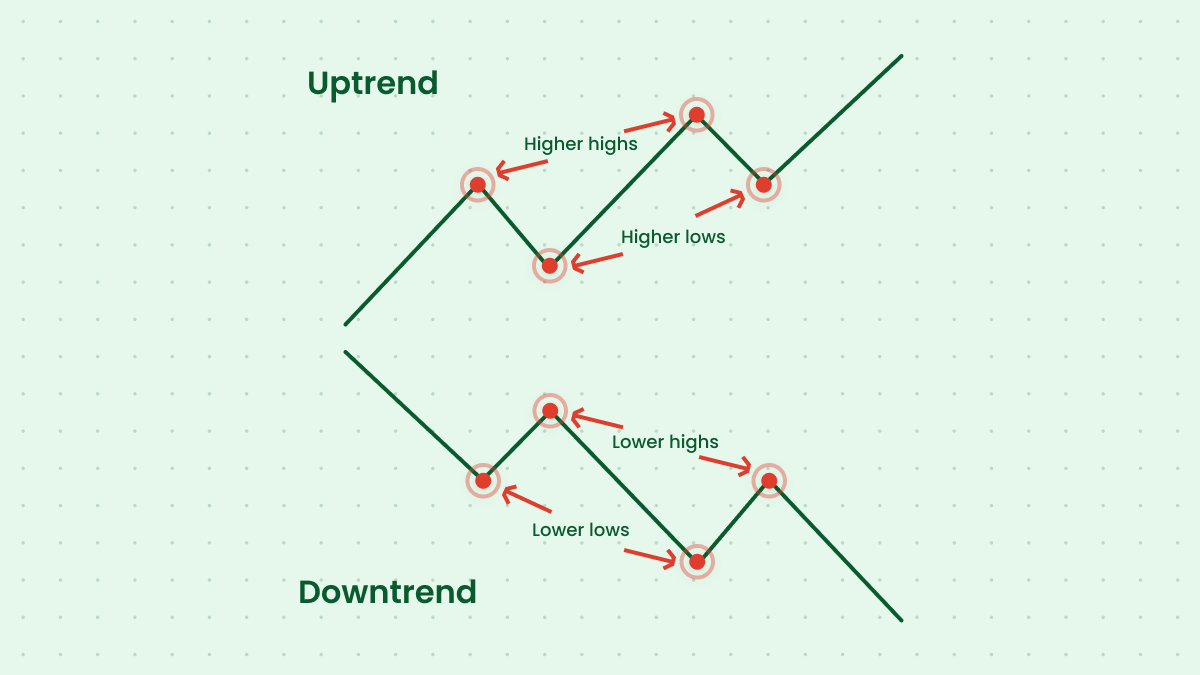
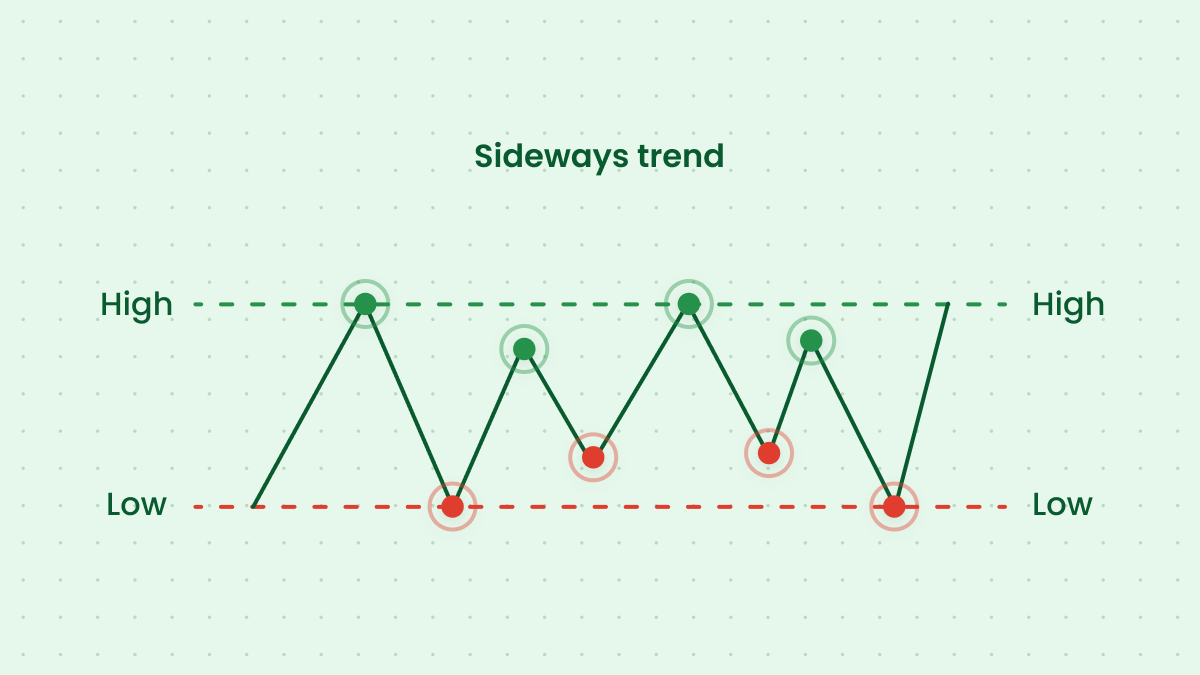
Every trend doesn’t come out of nowhere. Many factors affect the trend forming, including:
- The law of supply and demand
The fundamental theory of supply and demand is one of the key aspects determining Forex trends. When demand for a particular currency exceeds its supply, the currency rises in price, giving rise to an uptrend. On the other hand, when supply exceeds demand, the currency falls in price, leading to a downtrend.
- Geopolitical events
Geopolitics is crucial as all the significant events inevitably influence various aspects of society. Political instability, conflicts, elections, policy changes, and international relations lead to changes in the value of the affected currencies, potentially altering the direction of trends in the Forex market.
- Market sentiment
The psychology and expectations of market participants are vital in shaping Forex trends. Subjective interpretations of economic data, different emotions from denial to acceptance, and predictions on future market changes impact Forex trends. Thus, positive market sentiment driven by optimism and confidence can contribute to an uptrend, while negative sentiment fueled by fear or uncertainty can lead to a downtrend.
- Central bank policies
Monetary policies enacted by central banks, including interest rate decisions and other actions such as quantitative easing measures, strongly affect the Forex market.
For instance, high interest rates typically slow down the economy. When interest rates are high, it becomes more attractive to invest money in bank deposits due to higher returns. Conversely, borrowing money becomes less attractive as interest rates on loans rise. This situation can cause slower business development since loans are a vital source of funding for business functionality. Moreover, high interest rates can result in reduced consumer spending as people save more and spend less in order to have savings. That’s why the impact of interest rates on the exchange rate is significant.
- International transactions
International transactions stand out as a crucial factor determining Forex trends. The exchange of goods and services between countries, the volume of cross-border investments, and the overall flow of funds from country to country always affect the national economy and currency.
Effective ways to detect trends in Forex currency pairs
When assessing the economic stability of a specific country and considering the market sentiment that influences the value of a particular currency, it is important for traders to know how to detect trend changes in Forex through chart analysis. By understanding the factors determining Forex trends and employing suitable detection strategies, traders can swiftly make informed trading decisions and benefit from the profitable opportunities presented by these trends.
Now, let’s learn several effective ways to help you with accurate trend detection!
Price action analysis
Price action is a fundamental aspect of Forex trading. By analyzing pure price action, traders can obtain insightful information about the market dynamics and uncover market trends. No doubt, when mastering the skill of price action analysis, you enhance your ability to navigate the Forex market and make a profit from emerging trends.
Trend patterns
To detect a Forex trend using price analysis, traders should look for trend patterns that confirm the prevailing direction. In the case of an uptrend, traders should look for the formation of higher highs and higher lows. This pattern signifies that each successive peak and trough is higher than the previous one, indicating an upward trend. Conversely, in a downtrend, traders should search for lower lows and lower highs, where each trough and peak is successively lower than the one before, signifying a downward trend. By identifying these trend patterns, traders gain valuable insights into the market's direction.

To precisely recognize a trend, traders should use the trendlines as an essential tool in the price action analysis. With the help of trendlines, traders can visualize the direction and strength of an existing trend. Trendlines allow traders to monitor whether the price consistently follows the trend or breaks through it, helping to learn about the further continuation of an existing trend or detect potential reversal.
Channels expand the concept of trendlines and provide traders with clearer boundaries of the trend direction. A channel consists of two parallel trendlines: one on the lower side and another on the upper side of price moves in a determined timeframe. Channels provide a visual representation of the range within which the currency pair price is moving, allowing traders to detect a Forex trend and determine the best entry or exit points.
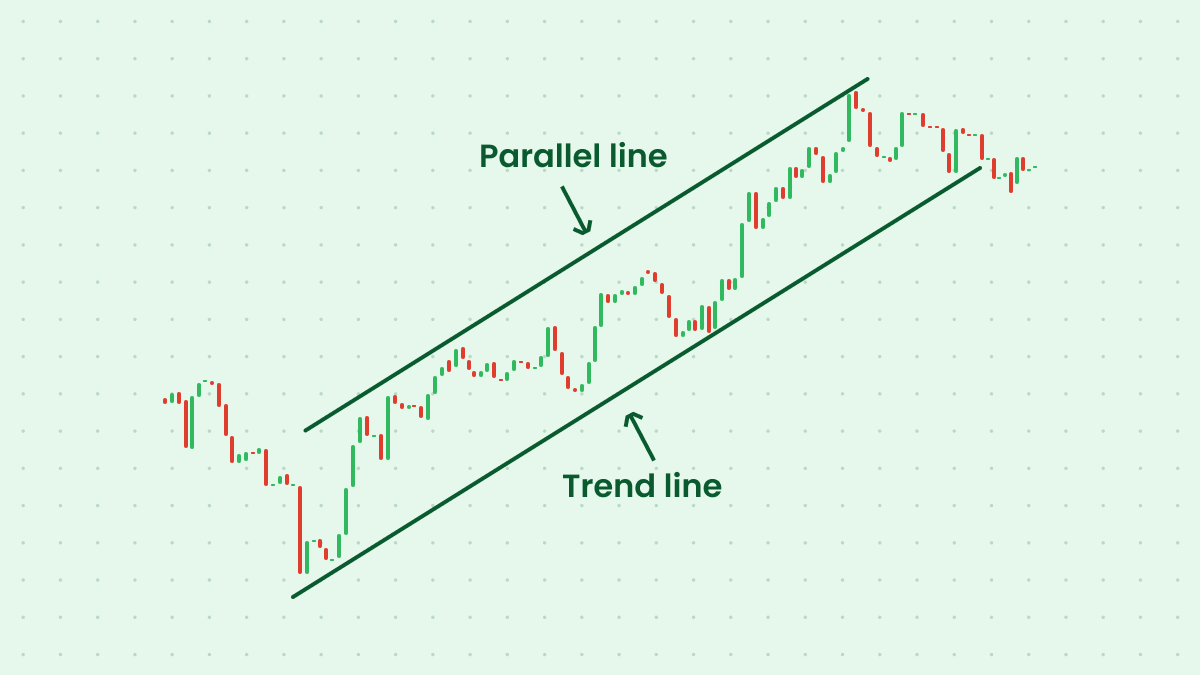
Forex trend indicators
Technical indicators for trend detection in Forex trading are tools that help traders to identify trends and determine their strength in the currency market. Trend indicators assist traders in understanding the overall direction and momentum of price movements. Here are some effective Forex trend indicators:
A moving average (MA) is a powerful tool traders use to identify and confirm Forex trends. MA is a widespread trend indicator that calculates the average price over a specific period, smoothing out short-term price fluctuations and allowing traders to determine the overall direction of the currency market. MAs provide confirmation of the trend when the price remains on one side of the moving average line. In an uptrend, the price generally stays above the MA, acting as support. In a downtrend, the price remains below the MA, serving as resistance. Traders explore these movements to confirm the presence and strength of a particular trend.

The relative strength index (RSI) is a technical indicator used to measure the momentum of price movements. This indicator is popular for its reliability and ease of interpreting trading signals. The RSI is undeniably a valuable indicator for detecting trends in the Forex market.
The RSI allows traders to determine overbought and oversold conditions within a particular timeframe. The indicator varies from 0 to 100, and it generally demonstrates the overbought conditions when it reaches the 70 mark and above, and the oversold ones when it falls below 30. If the RSI remains in the overbought area for some time, it suggests a potential downtrend as selling pressure may increase. Otherwise, when the RSI stays on the oversold side, it indicates a potential uptrend as buying pressure may become higher.
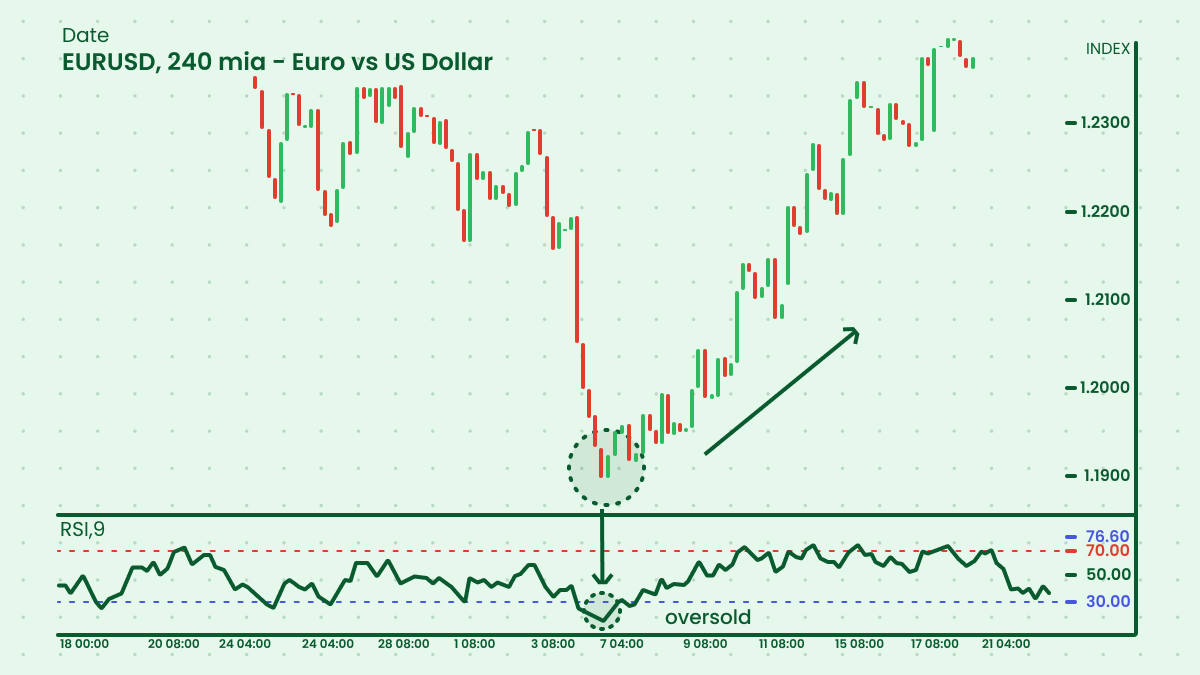
The average directional index (ADX) is a technical indicator that enables traders to detect trends in Forex trading. Traders respect the ADX indicator as it showcases the strength of a trend and allows traders to identify the best trading opportunities.
The ADX is a single line that fluctuates from 0 to 100. The higher the ADX rate, the stronger the trend; lower reading determines weaker trends or a ranging market. When the ADX rises above the 25 mark, it implies that a trend is gaining momentum. If the ADX falls below 25, it may indicate a period of consolidation or a ranging market.
A common practice in Forex trading is to utilize the ADX in combination with other indicators. Traders often incorporate the positive directional indicator (+DI) and the negative directional indicator (-DI) alongside the ADX to gain more insights into the trend. These two indicators provide traders with information about trend direction. When the ADX rises, and the +DI crosses above the –DI, traders can observe a strengthening bullish trend. If the –DI indicator, however, crosses above +DI, this is evidence of a bearish trend gaining momentum.
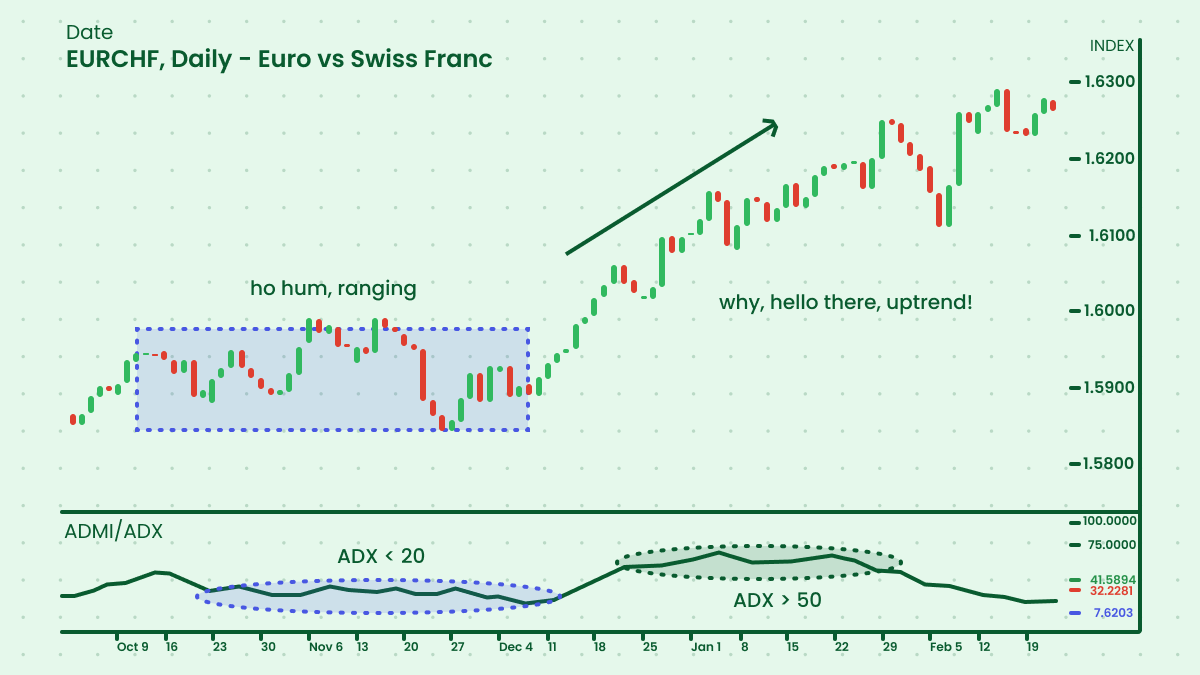
MTFTI
The multi-timeframe trend indicator (MTFTI) is an excellent tool that enables traders to view the trend comprehensively. By comparing currency movements across different timeframes, traders can validate the consistency and strength of a trend. If a trend is clearly visible on multiple timeframes, it indicates a stronger and more reliable trend. Observing a trend in multiple timeframes can increase traders' confidence in their trading decisions.
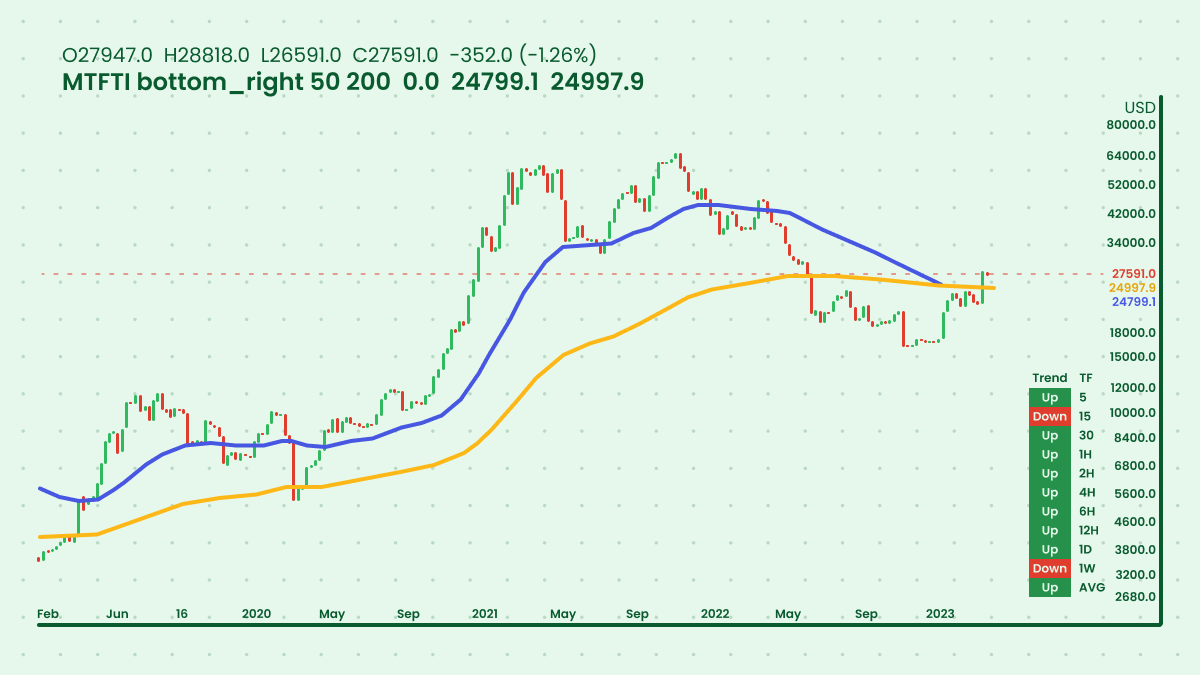
Summary
Developing a skill of trend detection in Forex trading is like unlocking a secret code that can lead to success and profitability. A trader who knows how to identify and follow trends becomes a powerful market player with a vital tool in hand.
To promptly detect a Forex trend and capitalize on it, traders should know the factors that can give rise to a particular trend. For this, they must use suitable tools and indicators to detect trends on charts.
Traders can utilize various technical indicators, including RSI, moving averages, ADX, and MTFTI to accurately detect trends in currency trading. The RSI helps determine overbought and oversold conditions, while moving averages smooth out price data and indicate trend direction. The ADX measures trend strength, and the MTFTI examines multiple timeframes to confirm trends.
In addition to the mentioned trend detection methods, price action analysis is another important technique that traders should turn to. Price action analysis implies the observation of the actual price movements on the charts without relying heavily on indicators. By concentrating on pure price data, traders can gain valuable insights into the overall market sentiment and the strength of a trend.
By understanding these tools and considering factors that can influence trends, traders can swiftly detect Forex trends and make wise trading decisions.
FAQ
How do you find trends in Forex trading?
In Forex trading, combining technical analysis methods and indicators is one of the most effective strategies to identify and confirm a trend. Traders often look for trend patterns, such as higher highs and higher lows in uptrends or lower highs and lower lows in downtrends. To precisely recognize a trend, Forex professionals use the trendlines and complete them with channels. Moreover, Forex trend indicators such as RSI, moving averages, ADX, and MTFTI provide comprehensive information about trend strength and overall market sentiment.
What is the best trend strength indicator?
The average directional index (ADX) stands out as one of the most effective trend strength indicators in Forex trading. The ADX focuses primarily on the trend’s strength without taking into account its direction. Readings above the 25 mark demonstrate a pretty strong trend, while values below 20 indicate a weak trend or ranging market.
How does a timeframe affect trend performance in Forex trading?
Тhe concept of trend relies on the timeframe you’ve selected to operate within, as different timeframes can demonstrate different trends. So, before starting the trend identification, you should determine your timeframe. The timeframe depends on your Forex strategy and goals. For example, as a position trader, you should work with a four-hour or higher timeframe, while a day trader should consider a 30-minutes timeframe or lower. However, it is helpful to observe various timeframes as you can determine the strength of a trend and make sound decisions.




